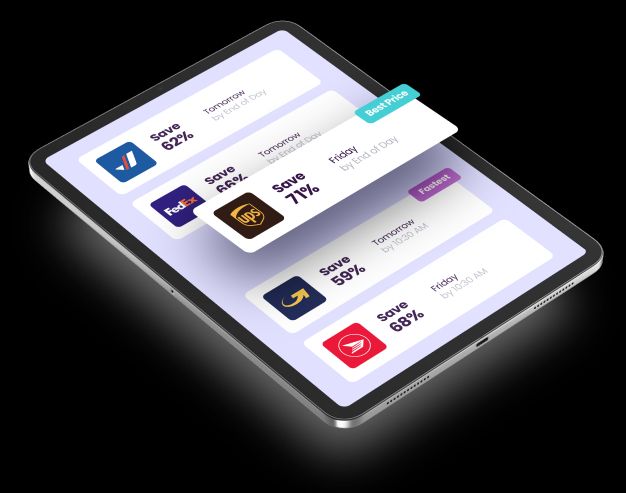
June 27, 2025 • by Paul Bourque
How to ship a package from Canada to Japan?
Canadian shipping broker Secureship can help you ship to Japan for far less and way more convenience
Read more

by Dan Allard
Sep 4, 2017
Key Points
Table of Contents

The thought of shipping your items internationally can seem overwhelming, especially if you’ve never done it before. The process of sending packages to another country is much more complex than sending packages domestically. You may be wondering, “is there a way I can ship internationally that’s both cost-effective and time efficient?”
At Secureship, we have helped thousands of individuals and businesses ship packages all over the world. We’ve put together a beginner’s guide to get you started with your first international shipment.
Let’s assume you’ve received your first international order and you’re getting ready to send the package. First, you should check to see that the item you intend to ship can legally be sent to the destination country. Depending on what the item is and where it needs to go there may be certain restrictions you need to be aware of.
There are useful online resources to help you determine what restrictions, if any, will pertain to your shipment. Check out the free Import/Export Country Regulations tool by UPS to search for restrictions from the destination country.
In most cases, you will need two sets of documents for your international shipment: a commercial invoice and a customs form. The customers form is part of the label and should be attached to the outside of the box. Also on the outside of the package, you should have a clear pouch containing three copies of the signed commercial invoice.
You will also need to provide the following information:
Contents Type - select amongst: “merchandise,” “sample,” or “gift”. Do not mark the item as “gift” if it is not. Some customers may ask you to do that in order to avoid import taxes, but you’ll be the one liable if it’s discovered.
Signing Person - the person responsible for the shipment. This is you, the shipper. Incoterm - who to bill for customs duties and fees.
DDU (Delivery Duties Unpaid by Sender) meaning recipient is responsible for any duty incurred.
DDP (Delivery Duties Paid by Sender) meaning you as the shipper will be covering the costs. Customs Items – a short description of the item being shipped, along with weight, quantity, value, and country of origin.
Be specific, but concise. Customs issues may arise if the description is too vague, but there’s not a lot of space.
Tariff Code (HS code) - a product-specific code as documented in the Harmonized System (HS) maintained by the World Customs Organization (WCO). Tariff codes exist for almost every product involved in global commerce. Required on official shipping documents for tax assessment purposes, a tariff code ensures uniformity of product classification worldwide.
If you are sending a product that is fragile or has a high-value you should consider purchasing insurance. When sending a package internationally there are many handling points where the package could be damaged or lost. Insurance provides protection in the event that was to happen.
Purchasing insurance is a relativity easy process, especially if you are using our Secureship platform to purchase your international shipping. We make it easy to purchase insurance through the carrier of your choice.
International transit times are always longer than domestic, however, you can still get a quick delivery if you know which carrier to use (and are willing to pay extra for faster delivery).
While they are the largest domestic shipping company in Canada, they also offer competitive international shipping services as well. Their prices are very competitive and if you’re looking for a cheap international shipping option, you’ll want to consider Canada Post. If you are looking for features such as real-time tracking updates and quick delivery, Canada Post may not be your best option.
DHL Express is another great option for shipping packages internationally. They offer competitive shipping rates and are very efficient, especially when you’re shipping to countries in Asia, Europe, or Africa. They are not US based so they can ship to embargoed countries like Iran and Cuba.
Unfortunately, it’s nearly impossible to provide an “average” price for international shipping because there are so many variables to consider.
If you’re shipping an item that weighs less than four pounds and are willing to sacrifice on features like tracking updates and delivery speed, you may be able to stay under $20. But you can easily go over $100 for many shipments, especially if you are shipping heavier packages, want better tracking features, faster speed, or are shipping to remote countries.
To help you save more on your international and domestic shipments, our platform Secureship allows you to compare shipping rates. compare shipping rates and see how much you can save today!
Once you’ve found the service and carrier that works best for you, you can take advantage of our volume discounts to save up to 50% off the regular price of shipping. Learn more about discount shipping through Secureship.

June 27, 2025 • by Paul Bourque
How to ship a package from Canada to Japan?
Canadian shipping broker Secureship can help you ship to Japan for far less and way more convenience
Read more
June 26, 2025 • by Paul Bourque
Which is the cheapest courier from Canada to Mexico?
Secureship can find you the cheapest courier from Canada to anywhere, and that could save you upwards of 50% on your shipments
Read more
June 25, 2025 • by Paul Bourque
Does Canada Post deliver to Italy?
Canada Post offers parcel deliveries to Italy via surface transport and air freight
Read more